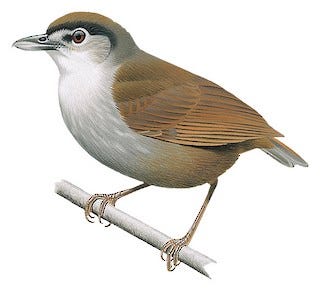Recently, I’ve been made aware of two species that had been lost, not seen by humans for generations, with the speculation in both cases that the plant or animal had probably gone extinct.
In the case of the plant, it is a grass that had not been seen since 1886. The last time a human being observed this plant, Grover Cleveland was president and Alexander Graham Bell’s telephone was only ten years old. While monitoring for a very rare and endangered sage, an exceptionally observant botanist, Jessie Vinje, came across a grass that she was unfamiliar with. This all happened in Carlsbad, California, just a half an hour’s drive (traffic willing) up the interstate from my home.
After consulting another botanist, the two contacted Jon Rebman, the Curator of Botany at the San Diego Natural History Museum, who confirmed that the grass was a presumed extinct species from Baja, Mexico, and not previously observed in the United States. A second scientist, Dr. Travis Columbus, a research scientist at California Botanic Garden and Professor of Botany, Claremont Graduate University, confirmed the species identification. The species is so rare, I don’t believe it has a common name. The botanists call it Sphenopholis interrupta ssp. californica
The grass had been observed in two locations in Baja in the 1800s. Dr. Rebman had looked for the grass previously in Baja.
Grass is a funny thing here in southern California. There is lots of it, and most of it shouldn’t be here. The grasses that predominate are nonnative, mostly European grasses. I have heard that the grasses of Europe began their invasion of the New World when they were carried over on the boots of Pizarro’s men.
Southern California is known for its rolling hills of light caramel brown dotted by occasional oak trees. These landscapes have a lot of appeal for a lot of folks, but they are far from the natural landscapes of California’s history. The caramel brown landscapes are the nonnative grasses, dead from the long summer droughts in this part of the world. The grasses take over the native chaparral in a process called “type conversion” Beset by frequent fires, the chaparral plants don’t have the time to mature and reproduce, and the annual grasses replace the native trees and shrubs.
A bird found in Borneo
The second found species is half a world away and has been unseen for even longer. An expedition to Indonesia sponsored by the American Bird Conservancy and the Oriental Bird Club was able to photograph and video a black-browed babbler in September. The bird has not been seen since 1849.
To say the bird is elusive doesn’t come close to giving an idea of the rarity of this find. The only other description of the bird was based on a single individual captured by a German geologist and naturalist in the late 1840s.
The ornithology team set out and found the bird among rugged limestone hills in the southern portion of Borneo, the largest island of the Southeast Asian archipelago. The group found the bird on its first day of observation. They saw two babblers in thick undergrowth next to a cliff. Unsurprising for an elusive bird, the birds favored staying in the undergrowth and were pretty quiet.
Habitat loss in not unknown in Borneo. Rediscovering the babbler gives hope for conservation.





Always nice to hear some good conservation news